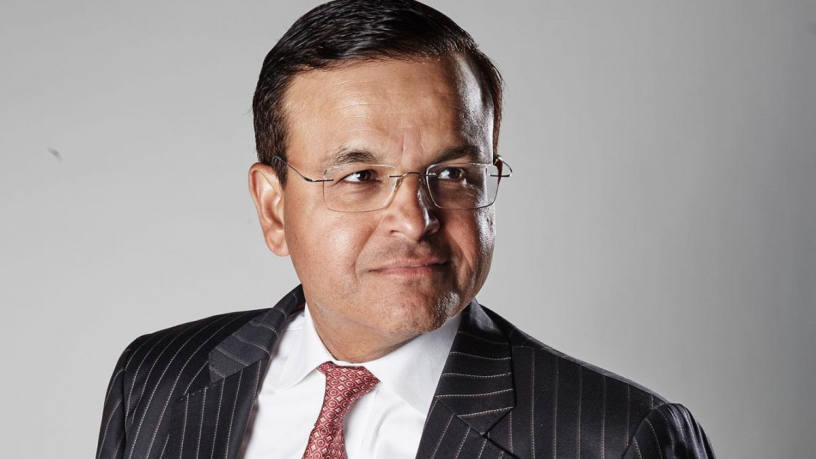Q: How does the outlook for the Middle East for 2022 compare with the trends that we saw in 2021?
A: Despite a challenging couple of years, the outlook for the coming year is definitely on the upside. We are seeing a confluence of positive factors — the most I have seen in my 25 years of banking in the Middle East. The economy is rebounding with improved sentiment for the immediate outlook, which is very exciting.
While there are still questions over the impact of Omicron, both in the region and elsewhere, the UAE’s economy and others have seen stronger corporate activity and renewed business optimism in recent months. Several other key markets in the region are also poised to see a ramp up in activity in early 2022, which will provide further momentum for growth.
Commodity prices are still looking very strong, despite recent setbacks. This is good news, not only for the oil producers of the Gulf Co-operation Council (GCC), but also for key African markets, such as Angola, South Africa and the Congo, given the rising prices of copper, iron ore and gold.
What’s more, we’re likely to see interest rate rises in the region in the coming year on the back of rate hikes by the US Federal Reserve, which will also prove positive for us as a bank.
Of course, in this region there are always geopolitical risks to consider — and one must be mindful of setbacks in the fight against Covid-19, both locally and internationally — but right now there’s still a lot of confidence for the year ahead. This scenario has encouraged us to think about how we, as a bank, can fast-track investment and prepare to take advantage of this growth recovery after some challenging times.
Q: Oil prices are trading higher than pre-Covid levels despite concerns over Omicron and the sale of oil from the US strategic reserve. What is your outlook for oil prices for 2022?
A: We think oil will continue to trade around current levels. Global demand has returned to its pre-Covid level of around 100 million barrels per day, and it’s likely that we’ll see a growth of around 1.5% in 2022.
Supply is starting to catch up, but the challenge is that currently there is very little oil-production capacity in the industry. While national oil companies in the Middle East have increased their capacity, the international majors have limited investment. GCC producers are still able to release around two million extra barrels per day, but with little excess capacity beyond that.
Prices should therefore remain well supported, even though it can be rash to make ‘crystal ball’ predictions as things can change very quickly. As it sits now, we think oil will continue to trade within the $65–85 range for the next 12 months, but it is difficult to predict beyond that.
Q: We’ve talked about the upsides for the regional economic outlook for 2021. What are the main threats to be mindful of in the coming year?
A: The positive outlook for the region is based on strong oil prices, the effective management of Covid-19 and a relatively calm geopolitical outlook. Any of these three interrelated factors could, of course, change very quickly.
Governments in the Middle East and the GCC have managed the pandemic very well and vaccination rates are very high, so hopefully we won’t have to go back to the days of the earliest lockdowns.
Having said that, you can’t predict how things will play out elsewhere. China and large parts of Asia have reintroduced lockdowns which is proving challenging, and we’ll have to see how Omicron, or another variant, will spread during the winter months.
For oil markets, it’s going to be interesting to see how countries will apply pressure to manage international prices, as once again it is on the political agenda in places like the US and the UK. If strategic reserves from the US and elsewhere continue to be released into the market in significant quantities, it could reduce oil prices by $15–20 a barrel. This in turn would have a cascading impact on the industry in terms of future planning, projects, spending and so on.
We remain vigilant, but hopeful, that any changes won’t be too extreme and continue to remain well-balanced in the near future.
Q: Increasing trade with the East has been a major feature for economies in the Middle East in recent years. How will these trade corridors continue to grow?
A: It’s definitely a trend we see continuing. Over the years, oil and gas exports from the region that would have once travelled westward have been shifting to populous and growing economic centres in Asia — such as China, India and Pakistan — where demand is on the rise. Coupled with that, there is the emergence of China as the manufacturing backyard for the world, so it’s not surprising that trade flows between the country and the Middle East region have increased so strongly.
We see that trend continue to grow as Asian economic centres become stronger and more powerful. While China will continue to be the largest export corridor for Saudi Arabia between now and 2030, India is set to be the fastest-growing corridor for Saudi Arabia in that time, driven by metals and minerals, chemicals, plastics and rubbers, with South Korea also emerging as a key export destination.
For the UAE, India will continue to be the largest export corridor thanks to ongoing demand for both minerals and gold, and corridors with China and Singapore are set to witness significant growth. These are all important shifts that play to our strengths as a bank.
While much of the growth in trade from the Middle East will be with Asia, it’s important to not overlook trade with the West in more specialised products. Specifically, in the specialised automobile sector, as well as aviation (which has taken a huge knock over the past two years), and specialised equipment for the oil and gas sector.













